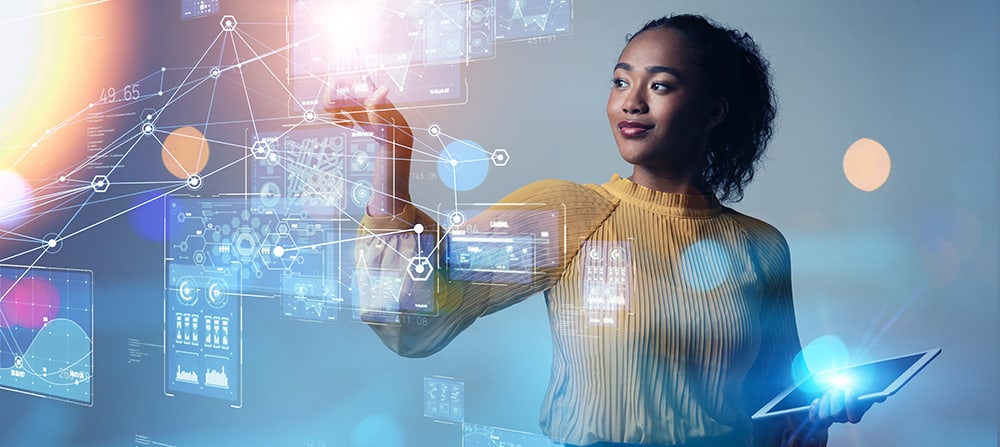This website uses cookies so that we can provide you with the best user experience possible. Cookie information is stored in your browser and performs functions such as recognising you when you return to our website and helping our team to understand which sections of the website you find most interesting and useful.
Connected, Controllable LED Lighting – An Energy Efficiency and Decarbonization Solution
Oct 05, 2022
Celebrated the first Wednesday of October, Energy Efficiency Day is a collaborative effort by dozens of US organizations to raise awareness about the positive impacts of energy efficiency and its still untapped potential. With the climate crisis bearing down on people and natural resources everywhere, EE Day 2022 is an opportunity to consider the vital function EE plays in our clean energy and decarbonized future.
For the DLC and its stakeholders, it’s only logical to reflect on lighting’s role in the climate discussion. According to Allied Market Research’s “Industrial and Commercial Lighting Market Outlook – 2025, energy used for lighting produces approximately five percent of global carbon emissions. Maximizing the use of efficient lighting is therefore a factor for meeting decarbonization targets of businesses, as well as the 24 states and the District of Columbia that have economy-wide greenhouse gas (GHG) reduction goals, and 130 US cities that have signed onto the Cities Race to Zero, a United Nations campaign that envisions a zero-carbon world.
The US Department of Energy (DOE) calls energy efficiency “one of the easiest and most cost-effective ways to combat climate change, clean the air we breathe, improve the competitiveness of our businesses, and reduce energy costs for consumers.” (To help illustrate efficiency’s decarbonization value, this US EPA tool enables users to estimate GHG emissions resulting from their building’s energy use.)
While technological solutions for reducing energy consumption and associated emissions abound, LED technology – promoted by utilities for the past decade – has contributed enormously to energy efficiency savings. Going forward, a largely overlooked but potentially hugely impactful way to augment those savings is through expanded use of connected LED lighting with controls.
A study by the DLC and Northwest Energy Efficiency Alliance (NEEA), for example, has also shown that adding networked lighting controls (NLC) to commercial lighting projects raises the efficiency of those projects by an average of 47 percent over what can be accomplished with LEDs alone. For some building types, increased efficiency approaches 70 percent. In addition, research by the DLC and the Alliance to Save Energy found that EE programs that capitalize on system-level lighting efficiency measures – combining lighting technology upgrades with NLCs – could see an additional 22 percent lifetime energy savings on average. Additionally, looking at possible peak demand impacts through such a systems approach, the report noted that peak savings available from commercial and industrial lighting technologies by 2035 could be over 37,000 megawatts.
With national energy policy moving toward decarbonization, electrification, and grid flexibility, lighting controls are poised to play a critical role in managing commercial energy loads. Electrification increases load on the grid and measures will be needed to manage it effectively. LED lighting can provide an easily controlled load, with sensors providing granular occupancy data to help manage other building loads, as well.
The DLC’s latest Solid State Lighting (SSL) Technical Requirements (V5.1) require that all products on the SSL Qualified Products List (QPL) have dimming capability – a basic control strategy that enables a nearly 50 percent increase in energy savings over what is achievable with LEDs alone. Almost all products (99.4%) on the SSL QPL are now dimmable, enabling additional strategies to save energy and emissions. V5.1 also requires manufacturers to report on integrated controls sensors and capability, as well as available wired and/or wireless control communication protocols so that users can more easily identify products with these features and capture additional energy and emissions savings.
Meanwhile, the DLC’s latest NLC Technical Requirements (NLC5) also aim to encourage wider market adoption of connected lighting by focusing on issues that are key to increasing customer confidence. NLC5 strengthens requirements for listing systems on the NLC QPL as part of a multi-year plan for continually advancing requirements related to the cybersecurity, interoperability, and energy monitoring.
The official Energy Efficiency Day website points to EE as “the cheapest, quickest way to meet our energy needs, cut consumer bills, and reduce pollution.” We know it’s also an economical, smart pathway toward a goal we must expeditiously achieve – a decarbonized world. In the weeks, months, and year between now and the next EE Day, the DLC will continue to illuminate the practical ways connected, controllable LED lighting can contribute.
© 2023 DesignLights Consortium. The DesignLights Consortium is a project of Efficiency Forward, Inc., a non-profit 501(c)3 organization. Privacy Policy Terms of Use
